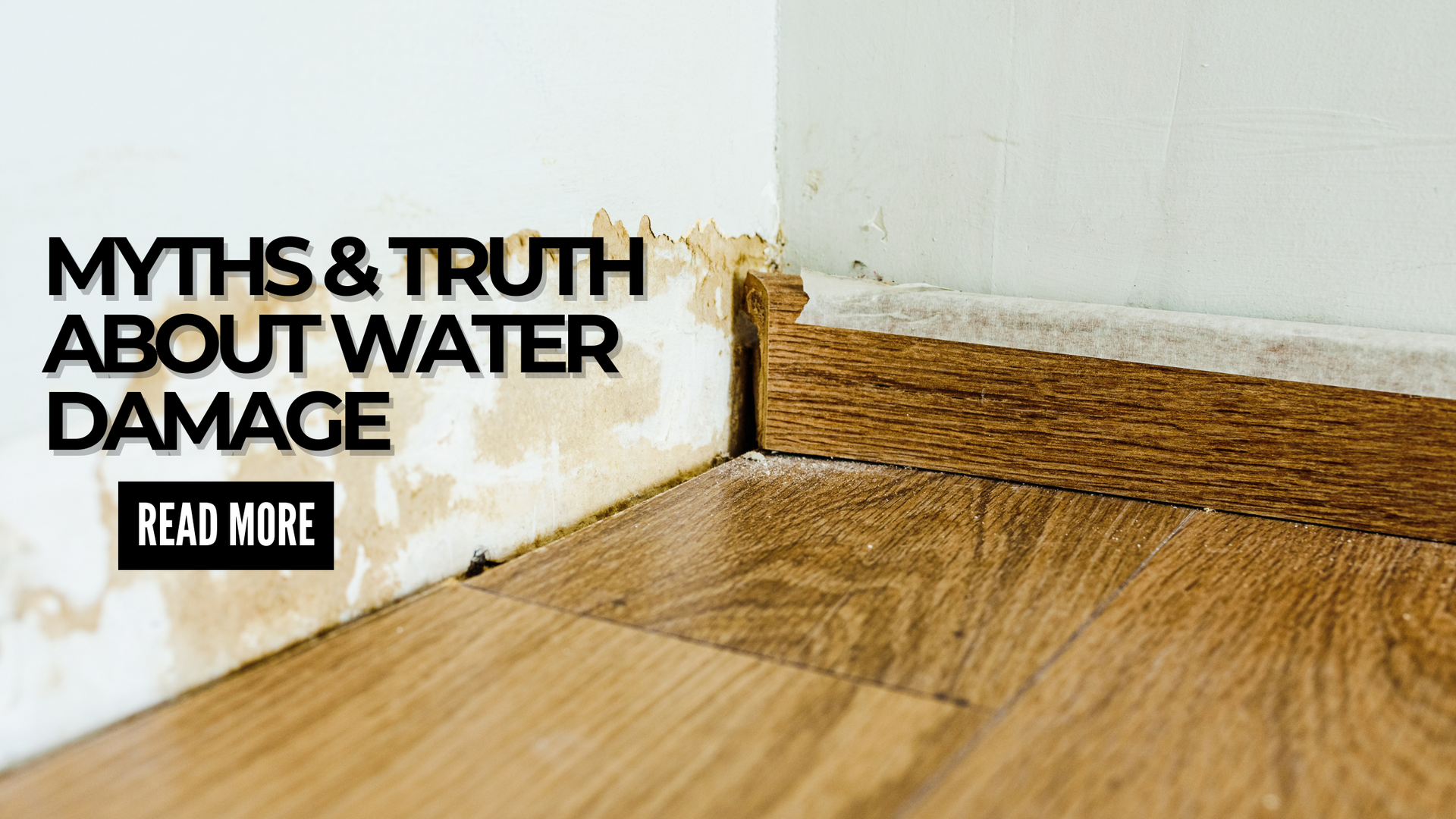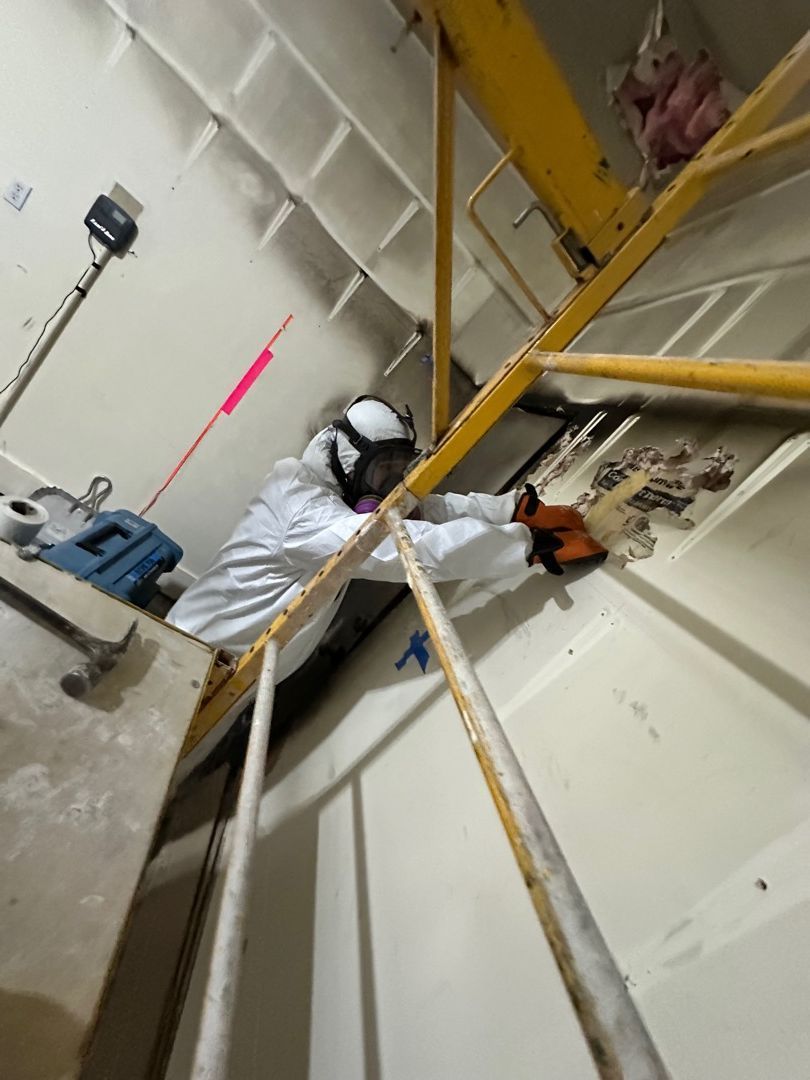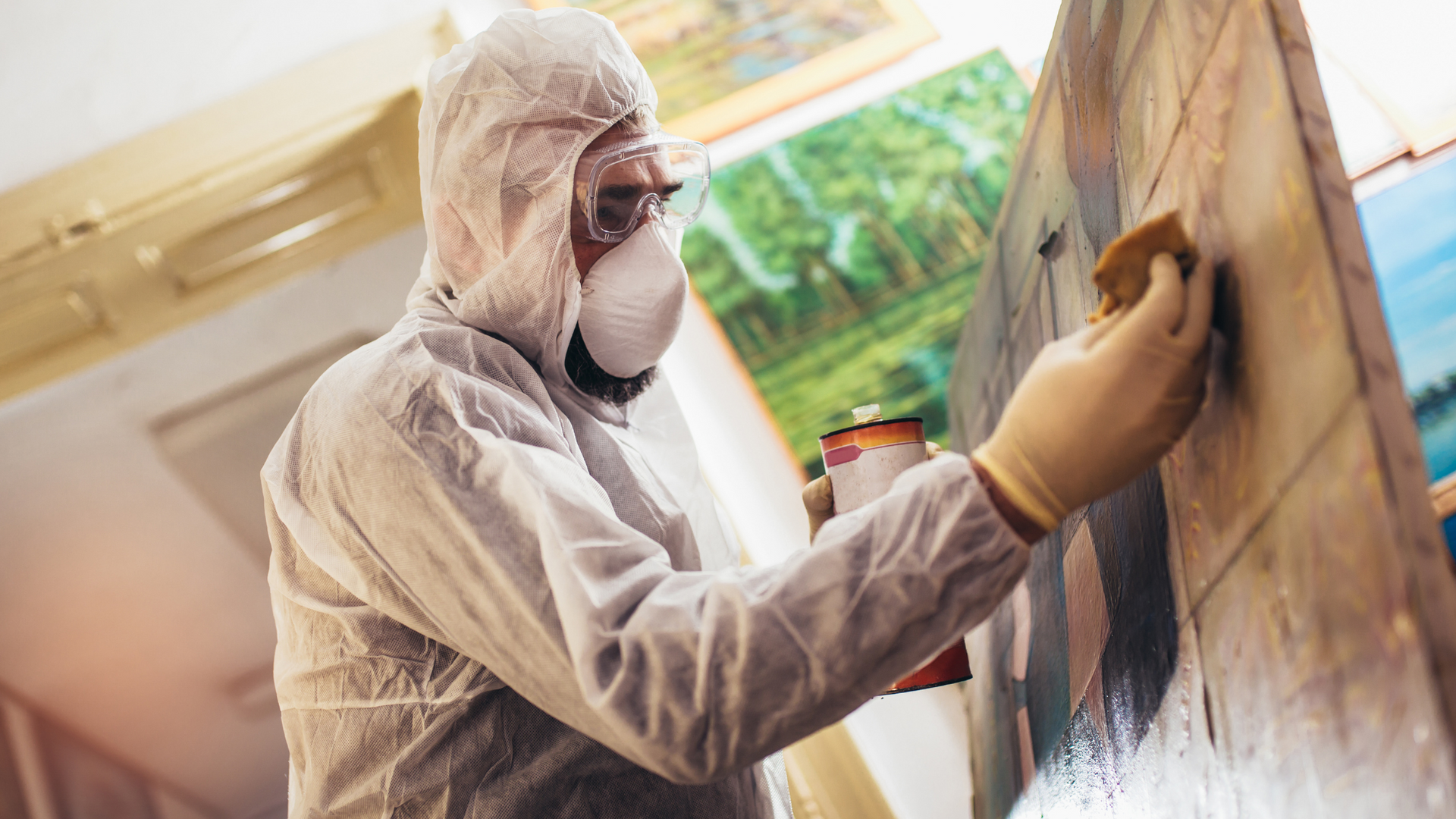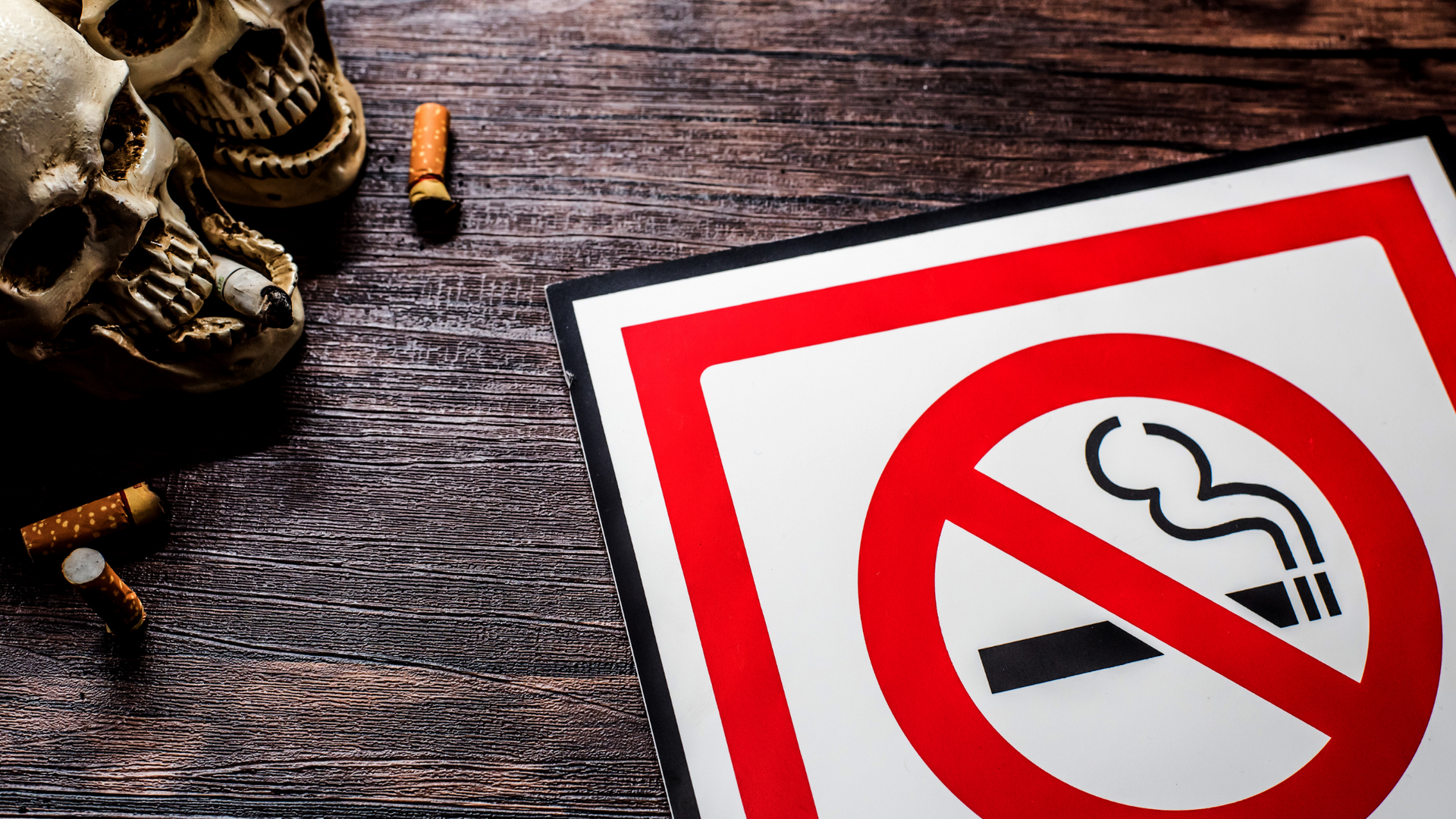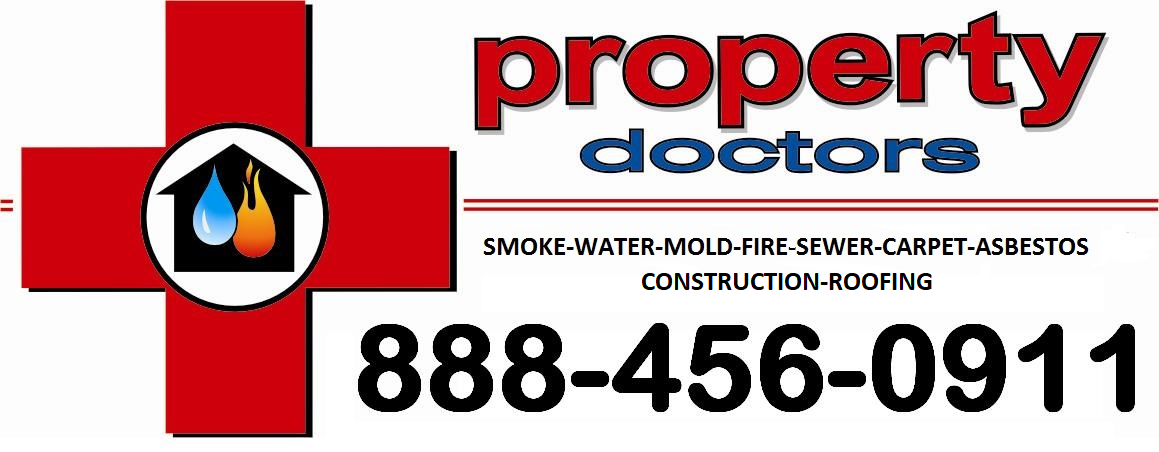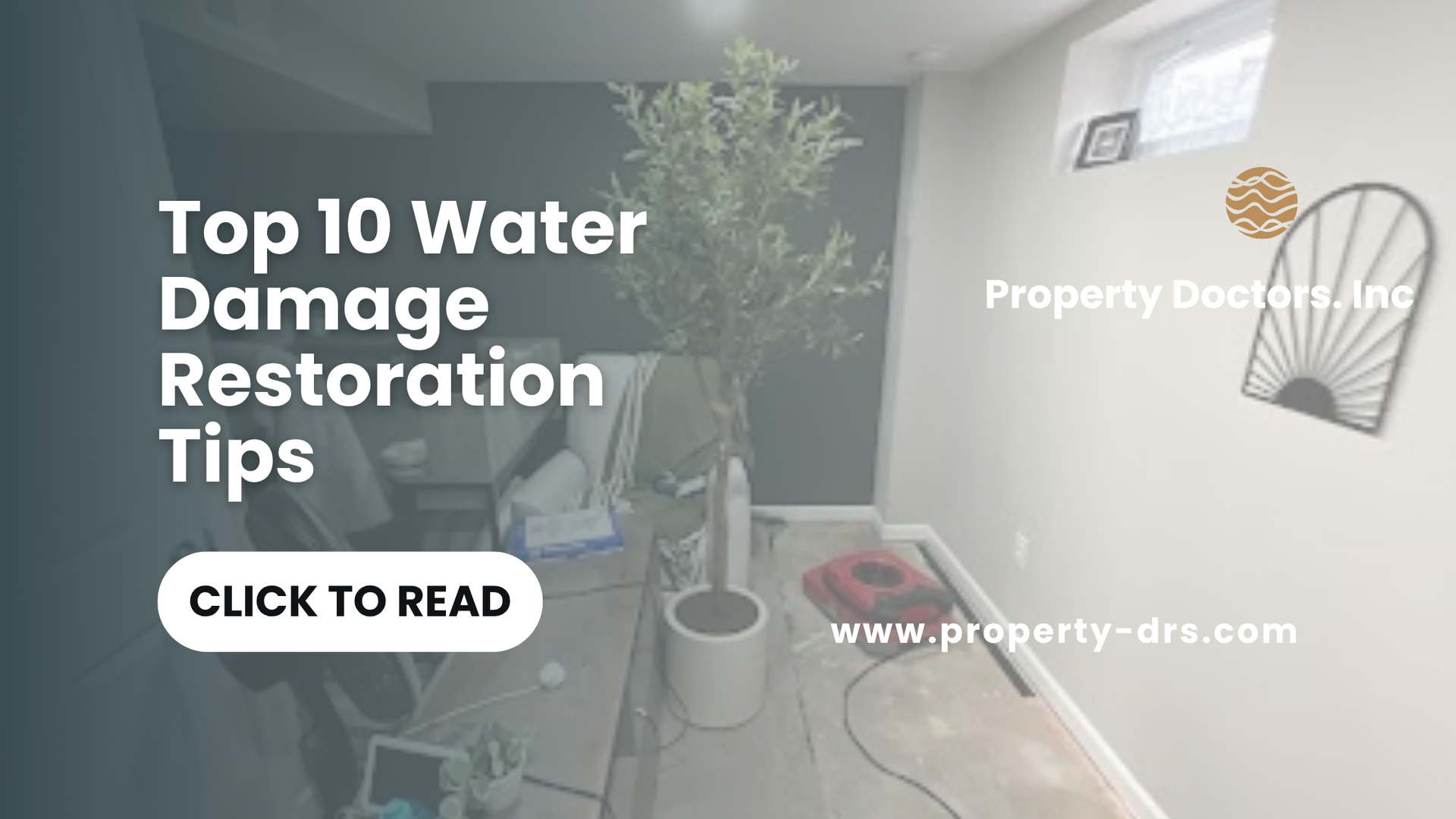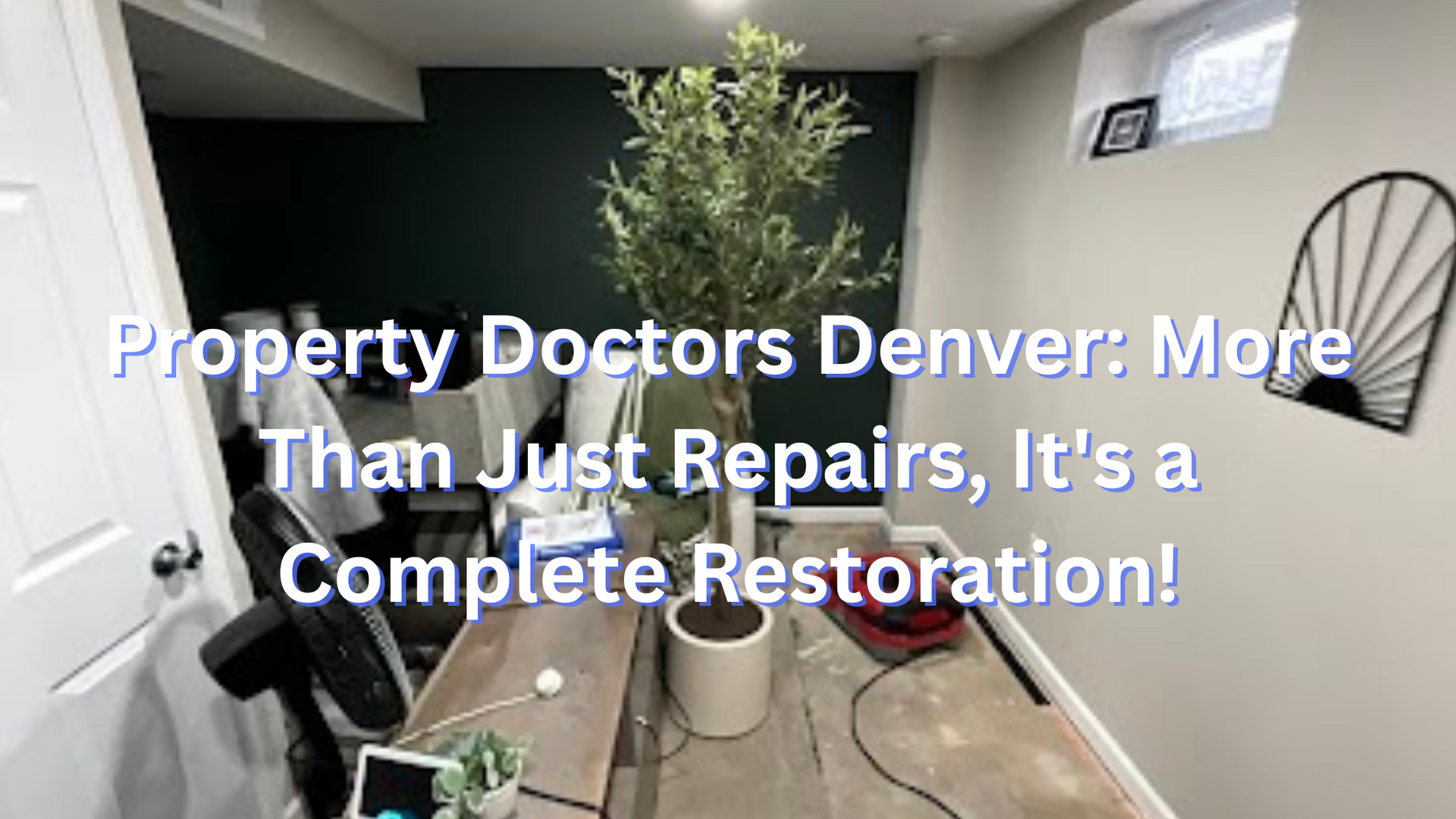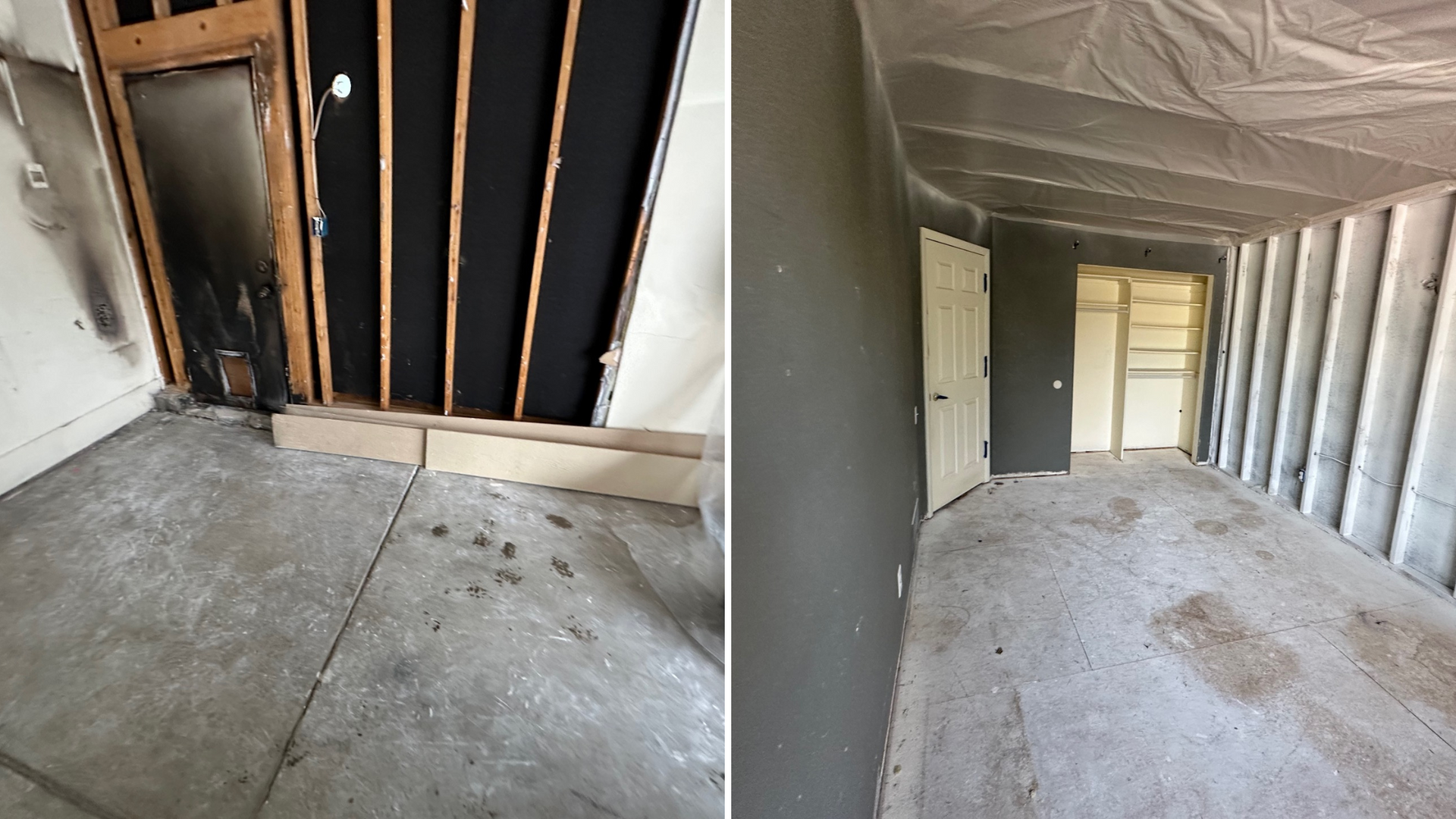Myth 1: You Can Always Handle Water Damage Yourself
One of the most common myths about water damage is that it’s something that can easily be handled by homeowners without professional help. Many people believe that if they spot a leak or minor flooding, all they need to do is mop it up, and the problem will go away.
Truth:
Water damage can be deceptive. What may seem like a small issue could be hiding more significant problems, like mold growth or structural damage, that won't be obvious immediately. When water is absorbed by wood, drywall, or insulation, it can compromise the integrity of your property and lead to long-term damage. Furthermore, water that lingers in hidden areas can lead to mold growth within 24 to 48 hours, posing a serious health risk.
Why Professional Help is Necessary:
Professional water damage cleanup services, such as those offered by Property Doctor in Colorado, use specialized equipment to detect hidden water damage and ensure thorough cleanup. They have the expertise to prevent long-term issues like mold, rot, and structural weakening by addressing the source of water damage, cleaning and drying all affected areas, and restoring your property to its pre-damage condition.
Myth 2: Water Damage Only Happens During a Flood
Many people assume that water damage only occurs during major events like floods, hurricanes, or heavy rainstorms. While these events can indeed cause significant water damage, they are not the only causes.
Truth:
Water damage can occur for a variety of reasons, and many of them are not related to natural disasters. Leaky pipes, burst hoses, faulty appliances, clogged drains, and even a simple appliance malfunction like an overflowing dishwasher can lead to significant water damage. In fact, plumbing issues are one of the leading causes of water damage in homes and businesses.
For example, a broken washing machine hose or a leaking refrigerator water line might cause water to spread unnoticed behind walls or under floors, resulting in extensive damage that may not be visible immediately. Without timely intervention, these situations can escalate into major water damage problems.
Why Professional Help is Necessary:
Whether you’re dealing with a plumbing issue or storm damage, Property Doctor professionals are trained to handle all types of water damage. They can quickly assess the situation, stop the flow of water, and begin the drying and restoration process. Professional services are essential in preventing further complications, such as mold growth or structural degradation, which could arise if the problem is left unattended.
Myth 3: Water Damage Can Be Fixed in a Few Hours
Some people believe that water damage cleanup is a simple, quick process that can be completed within a few hours. While it may seem like mopping up water is enough, the cleanup process is far more complicated than most people realize.
Truth:
Water damage cleanup is a multi-step process that requires time and care. After the water has been removed, the affected area needs to be thoroughly dried to prevent mold and mildew growth. It’s also important to clean and sanitize surfaces to prevent the growth of bacteria or other contaminants that may have been introduced by the water. If these steps are rushed or not properly completed, the damage could worsen, leading to the need for more extensive repairs in the future.
Additionally, even after drying, the underlying materials in your home—such as carpets, insulation, and drywall—can retain moisture, which can lead to mold if not treated properly.
Why Professional Help is Necessary:
Property Drs professionals have the tools and knowledge to handle water damage cleanup quickly and effectively. Their industrial-grade dehumidifiers, air movers, and moisture detection equipment ensure that every part of your property is thoroughly dried. They understand the importance of timing in preventing mold growth, and their attention to detail ensures your property is fully restored.
Myth 4: Insurance Will Cover All Water Damage Costs
Many homeowners believe that their insurance policy will cover the full cost of water damage cleanup and repairs. However, the reality is more complicated than that.
Truth:
Homeowner’s insurance policies can vary widely in terms of coverage for water damage. Generally, insurance will cover damage caused by unexpected events like a burst pipe or storm-related flooding. However, if the water damage is caused by neglected maintenance (such as a slow leak that wasn’t addressed in time), insurance may not cover the costs. Furthermore, flooding caused by rising water levels or external sources often requires a separate flood insurance policy.
Why Professional Help is Necessary:
While insurance may cover some of the cleanup costs, Property Drs can help you navigate your insurance claim process. Their team is experienced in working with insurance companies to ensure that the necessary documentation is provided and that you receive the appropriate coverage for water damage repairs. Additionally, they can assist you with assessing the full extent of the damage, so no issues are overlooked.
Myth 5: Water Damage Is Only a Problem for Homeowners
Water damage doesn’t just affect homeowners—it can also impact businesses, especially in areas prone to flooding or in buildings with older plumbing systems.
Truth:
Commercial properties are just as vulnerable to water damage as residential ones, and in many cases, the consequences can be even more severe. Water damage can disrupt business operations, damage inventory, ruin electronics, and cause extensive downtime. For businesses that rely on maintaining a professional image, water damage can also result in a loss of customer trust if not handled promptly and professionally.
Why Professional Help is Necessary:
Property Doctor provides
water damage cleanup services
for both residential and commercial properties. Their experience in handling commercial spaces allows them to work quickly and efficiently, minimizing the downtime for businesses. From office buildings to retail stores, Property Doctor ensures that your business gets back to normal as soon as possible, with minimal impact on your bottom line.
Call Property Drs for Water Damage Cleanup Service in Colorado
If you’ve experienced water damage in your home or business, don’t wait until the problem gets worse. The longer you wait, the more severe the damage becomes, increasing both the costs and time required for repairs. It’s essential to call in the experts for water damage cleanup and restoration to ensure that the problem is resolved thoroughly and professionally.
Property Doctor is proud to offer water damage cleanup services across Colorado. Their team of certified professionals is trained to handle all types of water damage situations, providing you with peace of mind and restoring your property to its best condition. Whether it’s a minor plumbing issue or major storm damage, Property Doctor has the experience, tools, and knowledge to tackle any water damage problem efficiently.
Conclusion
Water damage
can be a stressful and overwhelming issue for homeowners and business owners alike. With all the myths and misconceptions surrounding water damage, it's important to understand the truth and take immediate action when faced with this problem. By calling Property Doctor for water damage cleanup in Colorado, you can ensure that the situation is handled professionally and promptly, preventing further damage and restoring your property to its pre-damage condition.
Don't let water damage get the best of you—contact
Property Doctor
today and protect your home or business from further harm.
